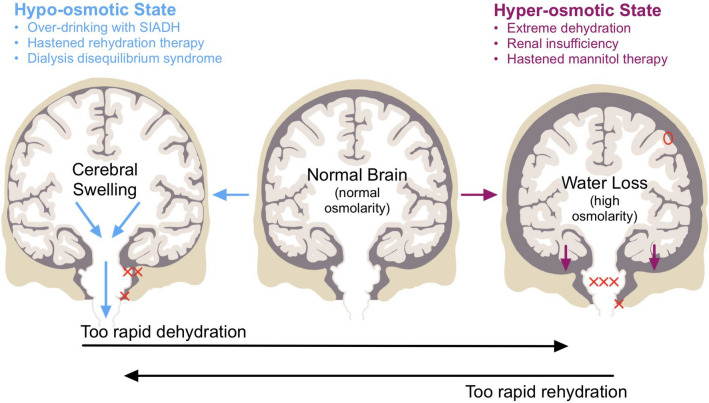Fig. 1.
Shifts in plasma osmolality over tens of minutes can lead to brain injury. A sudden drop in plasma osmolality (left panel) leads to brain swelling as astrocytes in particular swell. Seizure is a common result as the brain becomes more excitable. In extreme cases, downward displacement of the brainstem (blue arrows) causes contusion from contact with the meninges (XX) or the foramen magnum (X), usually with lethal consequences. Elevated plasma osmolality (right panel) draws water from the CSF. Under acute hyperosmolality, the brain sinks within the cranial cavity (downward magenta arrows). This can cause herniation through the foramen magnum (X) or longer-term demyelination of pontine white matter (XXX) or other structures (i.e., tegmentum, thalamus, putamen, caudate nucleus). Reduced brain flotation can stretch and damage cortical vessels (O). Overcorrection of plasma osmolality can occur by rehydrating from a hyperosmolar state using water instead of isotonic saline infusion. Conversely, a too rapid mannitol infusion in response to swelling can draw excessive water from the brain [13, 15]. Figure by J. A. Hellas. CSF, cerebrospinal fluid, SIADH, syndrome of inappropriate antidiuretic hormone.

